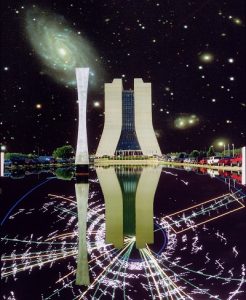
The bottom of the picture is a computer-generated display of the Top Quark using software that Bill Foster wrote in about 1990.
For more than 25 years before being elected to represent the people of Illinois in the U.S. Congress in 2008, Bill played a leading role in several groundbreaking experiments in elementary particle physics. At Fermi National Accelerator Laboratory, he managed several multi-million dollar accelerator construction and research projects, and led teams of engineers and physicists to help build the latest round of Fermilab’s giant particle accelerators. Along the way he designed and built equipment using a number of advanced technologies, including high speed electronics, superconducting magnets, analog and digital integrated circuit design, and high power electronics. Bill received several awards for these technical developments, including the 2022 Wilson Prize for Achievement in the Physics of Particle Accelerators.
The IMB Proton Decay Detector
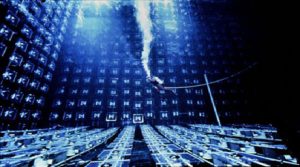
A diver takes a swim in the IMB detector.
In 1979, Bill joined the IMB (Irvine-Michigan-Brookhaven) collaboration as one of the key members who designed, built and conducted the experiment. The IMB detector was a 60-foot cube of ultra-pure water constructed in a salt mine underneath Lake Erie. The water was surrounded by 2000 light-sensitive phototubes, designed to detect proton decay. The experiment became famous for the observation of the neutrino burst emitted by a nearby supernova (exploding star), and in 2024 it was recognized with a historical site marker by the American Physical Society.
CDF – The Collider Detector at the Fermilab Tevatron
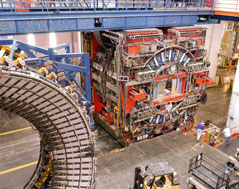
The Collider Detector at Fermilab, being rolled out of the collision hall after the discovery of the Top Quark.
In 1984, Bill moved to Illinois to work at Fermilab, joining a globally-recognized team working on the cutting edge of particle physics. The Collider Detector at Fermilab (CDF) is the first and largest detector at the Fermilab Tevatron, the world’s highest-energy particle accelerator. The goal of the experiment was to discover the identity and properties of the particles that make up the universe and to understand the forces and interactions between those particles. Bill designed and built significant parts of the original equipment, and Bill and his equipment participated in the discovery of the Top Quark, the heaviest known form of matter.
Bill’s Integrated Circuit Designs
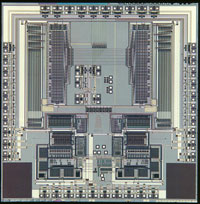
Photograph of one of Bill’s integrated circuits.
In the early 1990s Bill led the team that designed a new type of integrated circuit (computer chip) that allowed particle physics collisions to be measured with unprecedented speed and accuracy. Bill’s design is still being used in high energy physics experiments being built today.
The silicon “chip” is about 2mm (3/32nd of an inch) in size and contains many thousands of transistors. A typical particle physics experiment will use thousands of these specialized chips.
Bill and Fermilab’s Particle Accelerators
In 1994 Bill began working on Fermilab’s giant particle accelerators. During this time he managed several multi-million dollar accelerator construction and research projects. Bill was the co-inventor of Fermilab’s Antiproton Recycler Ring, the newest of Fermilab’s giant machines. Each time Fermilab’s machines operate, the particle beams go through over 500 magnets that Bill designed.
- What is Fermilab? http://www.fnal.gov/pub/about/whatis/index.html
- What is Particle Physics? http://www.fnal.gov/pub/inquiring/matter/index.html
- Physics at Fermilab: http://www.fnal.gov/pub/inquiring/physics/index.html
- The CDF experiment: https://en.wikipedia.org/wiki/Collider_Detector_at_Fermilab
- The Particle Adventure: an interactive tour of quarks, neutrinos, antimatter, extra dimensions, dark matter, accelerators and particle detectors: http://particleadventure.org/index.html
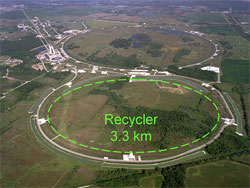
Bill’s Antiproton Recycler Ring is located in one of Fermilab’s long circular tunnels. The Fermilab High-rise is at left.
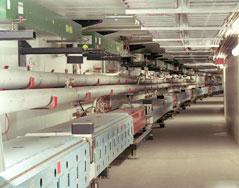
The inside of the 2-mile long tunnel. Bill’s Antiproton storage magnets are the green objects at top.
